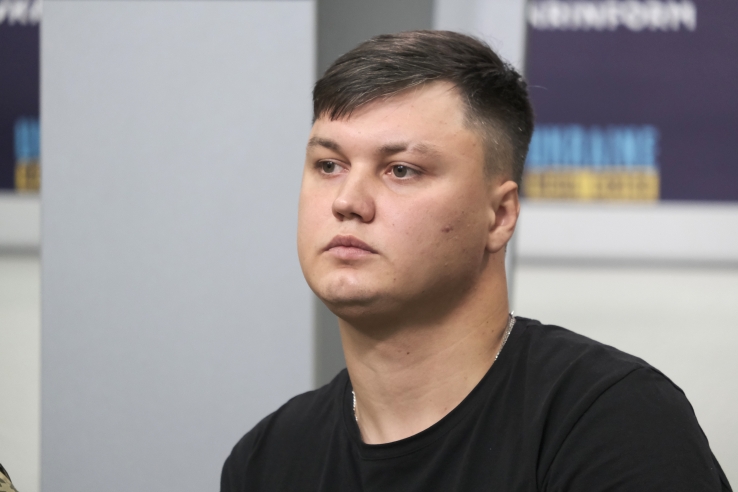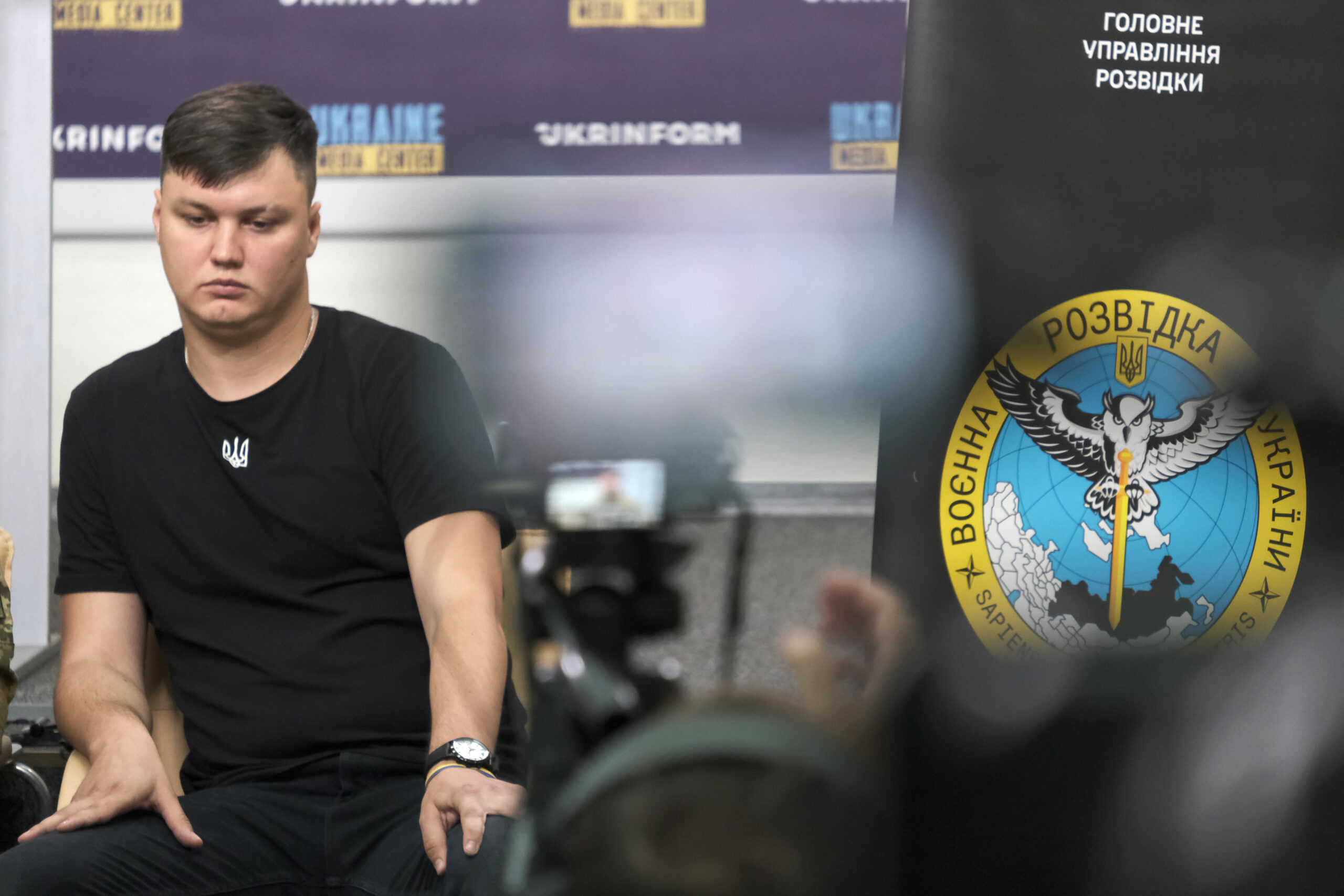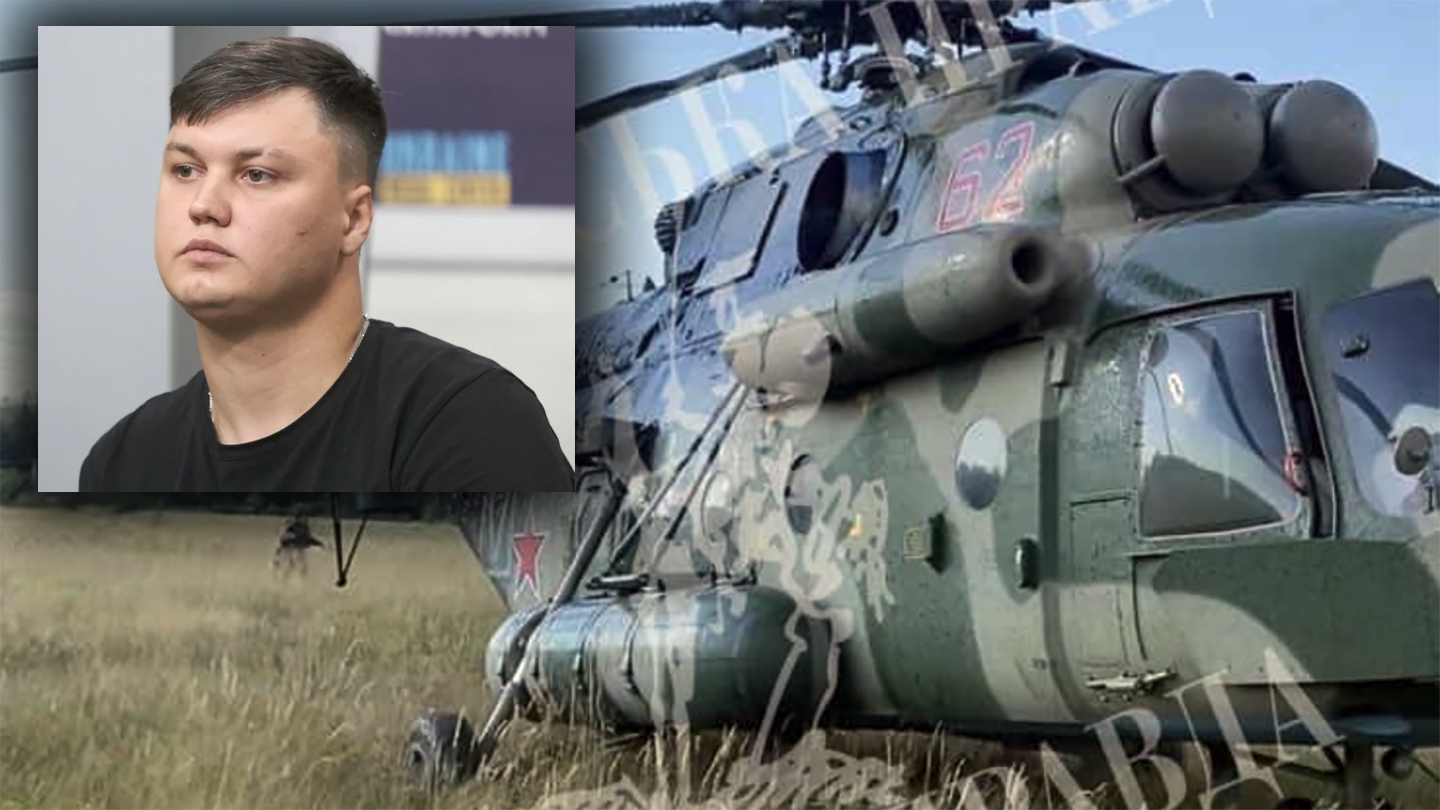At about 4:30 p.m. Aug. 9, Russian helicopter pilot Maxim Kuzminov and two crew members boarded their Mi-8AMTSh Hip combat transport helicopter at Kursk airport for what appeared to be a routine mission. But unbeknownst to the crew, this would be the last flight these men and their aircraft would take for Russia. It wasn’t until the helicopter – which had reached its maximum altitude and was traveling under radio silence – then dipped down very low as it crossed the Russian border that anything seemed out of the ordinary.
That’s when the Russians opened fire, Kuzminov, 28, told a press briefing Tuesday in Ukraine in which he offered new details about the operation. Wounded in the leg, he said he flew on for another 20 kilometers to a landing zone he had worked out with Ukraine’s Defense Intelligence Directorate (GUR). It was the culmination of a daring, secret, six-month plan that had Kuzminov agreeing to steal the helicopter and defect to Ukraine in return for the guarantee of safety for him and his family, a monetary reward and new papers.

Prior to today, many of the details about this incident were provided by Ukrainian Maj. Gen. Kyrylo Budanov, in an interview Radio Free Europe/Radio Liberty.
“We were able to find the right approach to the man, we were able to create the conditions to take out the whole family unnoticed, and ultimately create the conditions so that he was able to overrun this aircraft with a crew that did not know what was going on. When they realized where they had landed, they tried to run away. Unfortunately, they were destroyed; we would have liked to [take them] alive, but we have what we have.”
You can read more about that in our original story here.
The GUR also released additional details Sunday from an interview it conducted with Kuzminov as well as a documentary it produced about the defection plot.
“I realized that I was near the border, that is, I have handed my location. […] It flew at extremely low altitude in radio mode. No one knew what was wrong with me. For three to four days, no one knew what happened. It flew successfully, landed,” he said, according to the GUR.

On Tuesday, Kuzminov offered additional details about what convinced him to abscond with a helicopter that likely had communications and self-defense equipment of interest to Kyiv in addition to the value of being a huge information operation win.
But well before hatching that plan, Kuzminov claimed that because of his disagreement with the war, he somehow managed to avoid attack operations, instead flying only cargo runs.
“I had the transportation of troops, cargo, only transport tasks. No punches, I didn’t do any of that. If I had to, I wouldn’t do it. Sometimes, of course, I had to fly to the territory of Ukraine with the same purpose, to transport troops. I was in Mariupol and Berdyansk.”

Ultimately, though, Kuzminov said even that wasn’t enough to quell his conscience. So in December 2022, he decided to defect.
“What prompted my decision? It is full awareness, full understanding of what is happening. And I decided for myself that this crime is the most cruel. I simply decided for myself that I would not take part in it, no matter what.”
Kuzminov said he knew the danger he was putting himself and his family in and all that he was giving up as a Russian helicopter pilot.
“In Russia I have my own plane, a good salary, two apartments, almost a pension. It doesn’t matter to me right now. The main thing ― not to fight against Ukraine.”
The special operation of GUR, code-named “Synitsa,” began after Kuzminov read the GUR’s Telegram channel which had posts trying to convince Russians to surrender.
“I was subscribed to the posts of the Main Directorate of Intelligence in Telegram, read, and was interested in information,” he said. “And there were contacts under the posts. I reached out, we created a secret chat and started corresponding. No one imposed their opinion on me in any way, it was my decision. And for the next six months, we were building routes, thinking about how best to do it, and on Aug. 9th, everything happened.”

The final decision was based on guarantees from Ukraine, he said.
“First of all, safety for me and my family, payments, new documents. This is the most important thing,” he said. “My parents are with me.”
The Ukrainian parliament, the Verkhovna Rada, passed a law last year courting demoralized Russian troops, offering monetary rewards to Russians who defected with their equipment.
A helicopter fetches $500,000, the legislation says. It was not immediately clear how much Kuzminiov received.
While Budanov said that Kuzminov’s crew members were killed, implying it was by Ukrainian forces, Kuzminov said he did not know what happened to them.
“I had two crew members with me,” he said, according to a translation of the Tuesday press conference by Ukrainska Pravda. “We did not have any weapons with us. Our pilots fly unarmed.”
“No one could resist me since the navigator had no helicopter piloting skills,” he added. “I reassured the guys, telling them everything was fine, good people lived here, and nothing would go wrong. But they got afraid, began behaving aggressively and eventually rushed out of the helicopter towards the border. I don’t know their fate, but the media reports suggest they may have been killed.”
While The War Zone cannot independently verify Kuzminov’s service record, he is listed in Russian records as an attack pilot of the 319th Separate Helicopter Regiment of the Eastern Military District, according to Agenstvo, an independent Russian Telegram channel.
Like Budanov’s earlier comments, Kuzminov’s account differs greatly from that of the Russian Fighterbomber Telegram channel, which as we previously noted, acknowledged the aircraft crossed into Ukraine and that two crew members were killed. But it tried to spin the incident as one involving a Russian helicopter pilot who lost his bearings and flew to Ukraine accidentally.
Fighterbomber also refuted claims that the pilot’s family had been moved to Ukraine in advance and said that they were in contact with relatives of all crew members.
As of noon Eastern time, neither Fighterbomber nor the Russian Defense Ministry had addressed Kuzminov’s claims, though Fighterbomber said that it would discuss them at some point today.
Moving forward, Kuzminov said that he is mulling over an offer to fly for the Ukrainian Armed Forces.
“In the future, I want to connect my life with aviation. We received an offer to stay here. I will definitely consider, maybe I will answer positively.”
The GUR said obtaining a Russian helicopter and pilot was a big win for Ukraine.
In our previous story, we noted that Ukrainska Pravda reported that the helicopter’s cargo consisted of undisclosed parts for VKS Su-27 and Su-30SM Flanker fighters, which were being transported between two airbases.
We also pointed out the intelligence value the helicopter and its equipment could offer Ukraine:
“As one of the latest versions of the long-established Mi-8 Hip design, the Mi-8AMTSh may also be of interest for closer examination, especially if fitted with some of the more modern Russian self-protection equipment.”
Meanwhile the various Flanker jet parts — depending on what exactly they consisted of — could potentially yield even greater intelligence benefits. All this could be useful for Ukrainian allies, too, with an established intelligence-sharing program to better understand various bits of Russian defense technology and tactics and share these lessons.“
While those details were not discussed Tuesday, GUR spokesman Andrii Yusov said that the incident “will have long-term harmful consequences for the enemy’s plans, and will allow Ukrainian intelligence to better understand the enemy’s communication and security system.”
Beyond capturing this one aircraft, Yusov said GUR plans to use this effort to increase its outreach to other Russians thinking of defecting.
“Now Maxim is a free man in a free country,” said Yusov. “He is considering the intention to join the Defense Forces of Ukraine and further counter Russian aggression. But it will be his decision ― a man who made a conscious choice.”
This will only be the beginning, Yusov claimed.
“We address all Russian servicemen: even during dictatorship there is a choice. You are not slaves… Go to the side of good where you are guaranteed safety, decency and a clear conscience.”
Kuzminov also urged Russians to defect.
“You won’t regret it. You’ll just discover the world of colors,” he said Sunday according to the GUR. “And remember: you just don’t know a lot, you haven’t seen other people live. When you really open something, you will change your opinion radically, the Russian pilot stressed.”
While we cannot verify what was onboard the Hip or whether the incident will spur other Russians to defect, two things are clear. The defection of a trained pilot and a fully functional helicopter is an embarrassment to the Russian Air Force. But after coming forward, Kuzminov will likely be living the rest of his life looking over his shoulder.
Contact the author: howard@thewarzone.com
